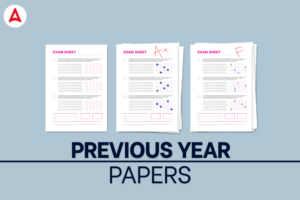Quantitative Aptitude for Bank Exams 2019
Quantitative Aptitude is hard in most cases especially in exams like Banks and Insurance. Many Banks exam has a two-tier examination pattern i.e., Prelims and Mains. Most of them have changed their exam patterns and set a sectional timing of 20 minutes on each section. Quantitative aptitude is important for every Bank Exams because proper strategy and enough practice can help you score full marks in this section. The level of changes may not be assured in the language section and you may be stuck while solving reasoning questions but quants is a scoring subject and assure full marks if the calculation is correct.
Today we start with some average concepts-
An average or more accurately an arithmetic mean is term as the sum of a number of data divided by n(term).
Average= Sum of all numbers/ total number of terms
Example1– An average of 31, 37, 41, 43, and 47
Method 1– Basic method
Sum of all the number=199
Number of terms= 5
Average= 199/5=39.8
Note: The average is equal distribution of each number
Method2– Divergence method
We know the average is mean
You choose any number as an average
Let select- 41 as an average
Now compare every number with the assumed average
31, 37, 41, 43, 47
31 is 10 less than 41
37 is 4 less than 41
43 is 2 more than 41
47 is 6 more than 41
Deviation=(-10-4+2+6)=-6
-6 is divided into a number of terms
= -6/5=-1.2
Subtract from the average we assume= 41-1.2=39.8
So the formula for deviation
New average= Old average+deviation/number if terms)
Above method is very helpful in Data Interpretation
Example 2– Average of 2014, 2019, 2025, 2030, 2050
Select the median value I.e 2000
Since all number are stating from 2000 so
Deviation= 14+19+25+30+50=138
New average= 2000+138/5=2027.6
Let say number are 49, 25, 16, 10
Here average is=sum of number/total number of term
49+25+16+10=100/4=25
That means each value is equal to 25
Some value left
Now-case 1– If 25 goes from the number no change in average
Case2– When 49 goes what is the change in average
We know the average is 25, 49 are 24 more than the average
49 goes it take 24 from the given term so 24 is divided into 3 remaining number
24/3=8 so it takes 8 from the average of each number
Now the average is 25-8=17
Case3-when 16 goes from the number
16 is 9 less than from 25, so there is a surplus of 9
This 9 is distributed to remaining term= 9/3=3
Now the average is 28.
Some value come
Case 4– Now say one number comes
49, 25, 16, 10
Say if 35 comes
We know an average number is 25
35 is 10 more than the average
Now there is a surplus of 10, this 10 is equally distributed among the number of terms
so the average is 27.
Some Basic Formula
Average of n natural number= (n+1)/2
Average of n even number=(n+1)
Average of n odd number= n
Average of n consecutive natural number= (First number + Last number)/2
You may also like to read-





 UIIC Assistant Previous Year Papers, Dow...
UIIC Assistant Previous Year Papers, Dow...
 RBI Assistant Notification 2026, 500+ Va...
RBI Assistant Notification 2026, 500+ Va...
 Daily Current Affairs Quiz 2025 26 Decem...
Daily Current Affairs Quiz 2025 26 Decem...








